The joy of digging in the dirt, growing flowers, and watching butterflies alight on fragrant blooms make growing a butterfly garden a magical summertime activity for kids of all ages. Today, we have the amazing outdoor adventure mom Josée, from The Backwoods Mama, here teach us all about why butterflies matter, what flower they’re attracted to and how to help butterflies thrive by planting a butterfly garden with your child. Planting a butterfly garden is a wonderful project for children of all ages. And you don’t have to have a lot of space; you can grow a butterfly garden nearly anywhere!
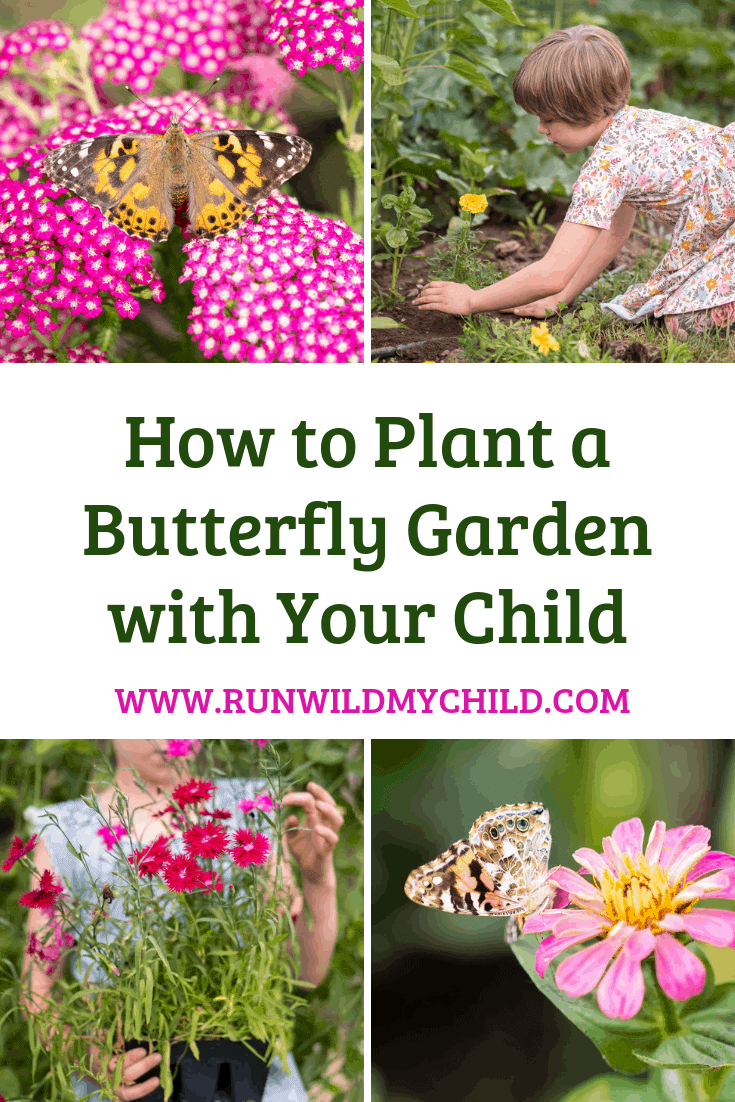
The butterfly is a flying flower, The flower a tethered butterfly.” – Ponce Denis Écouchard Lebrun
A budding interest in flowers and butterflies
“Maman, look! It’s a butterfly!” my daughter exclaimed with delight.
A beautiful tiger swallowtail alighted on a flower in our garden. We quietly watched as the butterfly sipped nectar and then fluttered away on the warm summer breeze.
Flowers and butterflies have been the topic of many conversations in our home lately. It all started when my children received a special parcel with fifteen tiny little painted lady caterpillars. As those little caterpillars, grew so did our collection of library books on butterflies and flowers. Soon, we were making lists of flowers that butterflies like and making trips to our local garden centre. We had decided to plant a butterfly garden for our soon to hatch painted ladies.
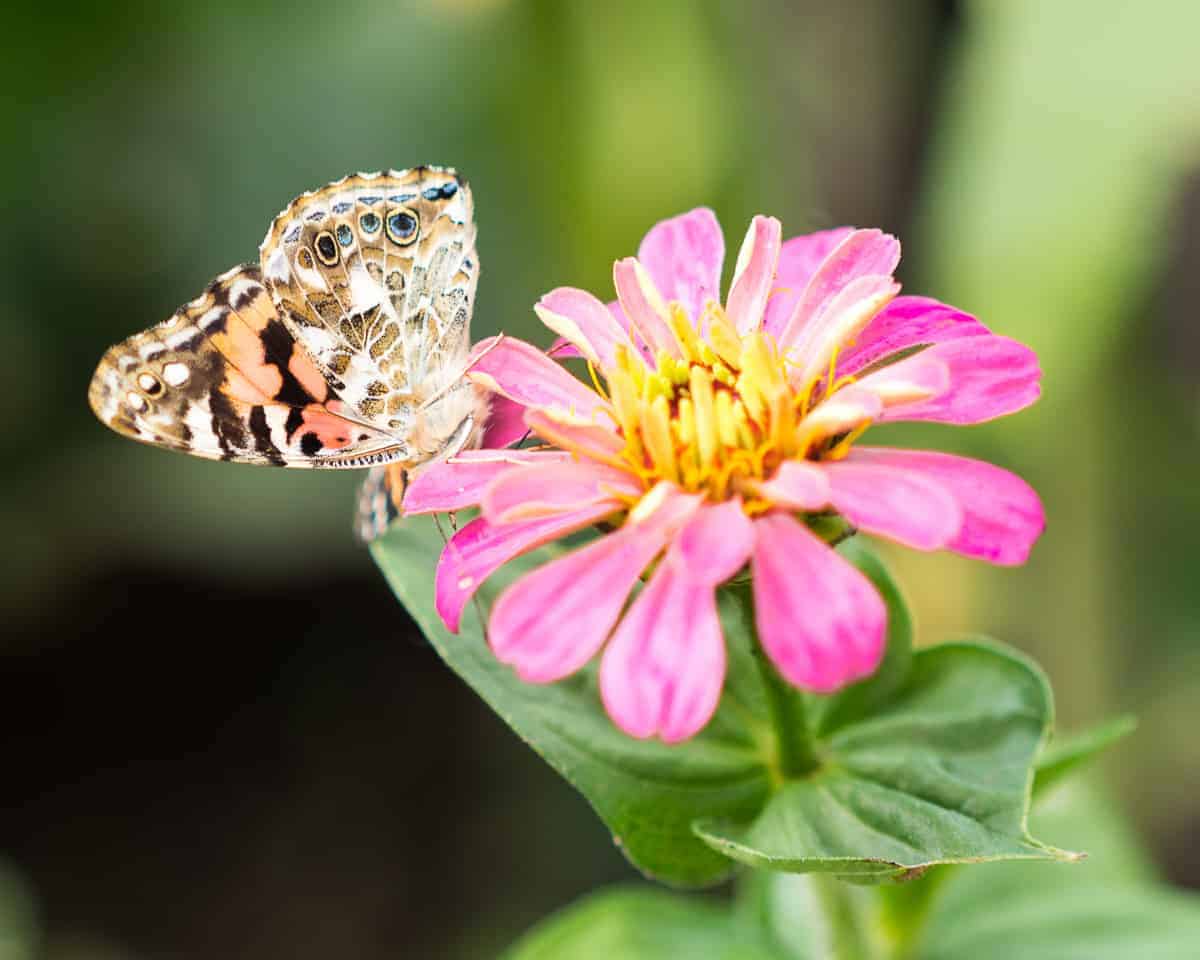
Why do butterflies matter?
Butterflies are some of the most beautiful insects on our planet. Their delicate wings dance like flowers in the wind. However, butterflies are much more than pretty bugs; they are very important for healthy habitats.
Butterflies are crucial pollinators. Some plants, like milkweed, depend on butterflies to help them reproduce. Butterflies are also an important food source for birds, amphibians, reptiles and other creatures. Butterflies are even considered an “indicator” species because they are very sensitive to changes in habitat.
Sadly, the fragile butterfly is under threat because of habitat loss, climate change and pesticide use. Don’t despair! That’s where you and your child can help. Growing a butterfly garden helps butterflies by giving them food to eat and a safe place to rear their young.
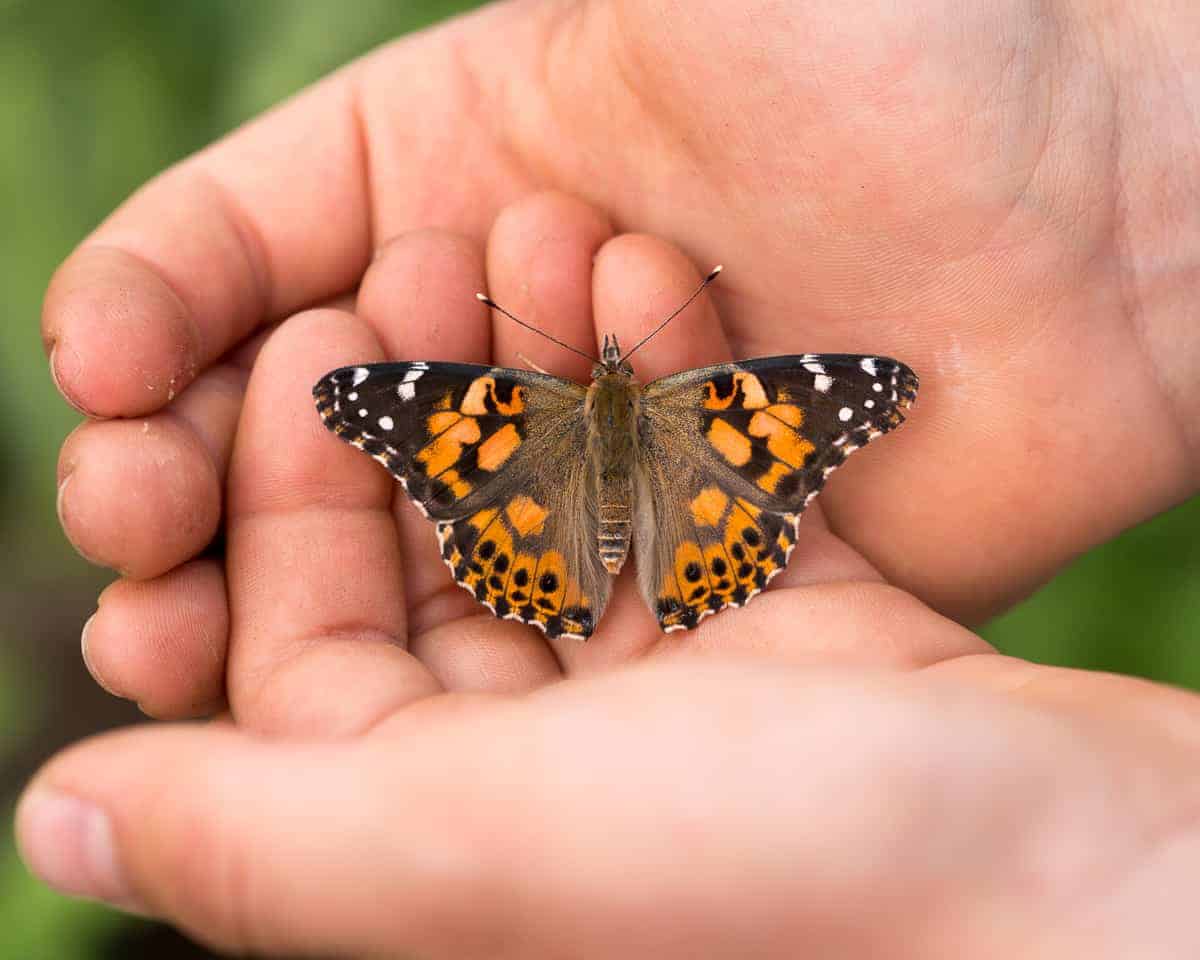
Attractor flowers for butterflies
Did you know that butterflies can see the color red? It’s true! That’s why many butterflies prefer flowers that are bright red, orange and yellow. Butterflies also taste with their feet – yum!
Another interesting fact about butterflies is that they are picky eaters. Each species of butterfly has its own favorite flowers. However, despite their picky palate, there are many flowers that butterflies love. I have compiled a list below of twenty-five flowers that are sure to attract butterflies to your garden.
These butterfly attractor flowers listed below come in all shapes and sizes. Some will come back every year (perennials) and others will not (annuals). Remember, flowers behave in different ways. Some get really tall or very wide. Other like to spread everywhere. Mint and goldenrod send out runner roots and can very quickly take over an area. Plant these in containers or in areas that you don’t mind be taken over.
Also, some native flowers can be difficult to find. Milkweed is a native plant and can be difficult to find. Check local nurseries specializing in native plants. In our butterfly garden, we have a mix of sunflowers, zinnias, dianthus, cosmos, echinacea, marigold, veronica and yarrow. It’s beautiful chaos and butterflies love it.
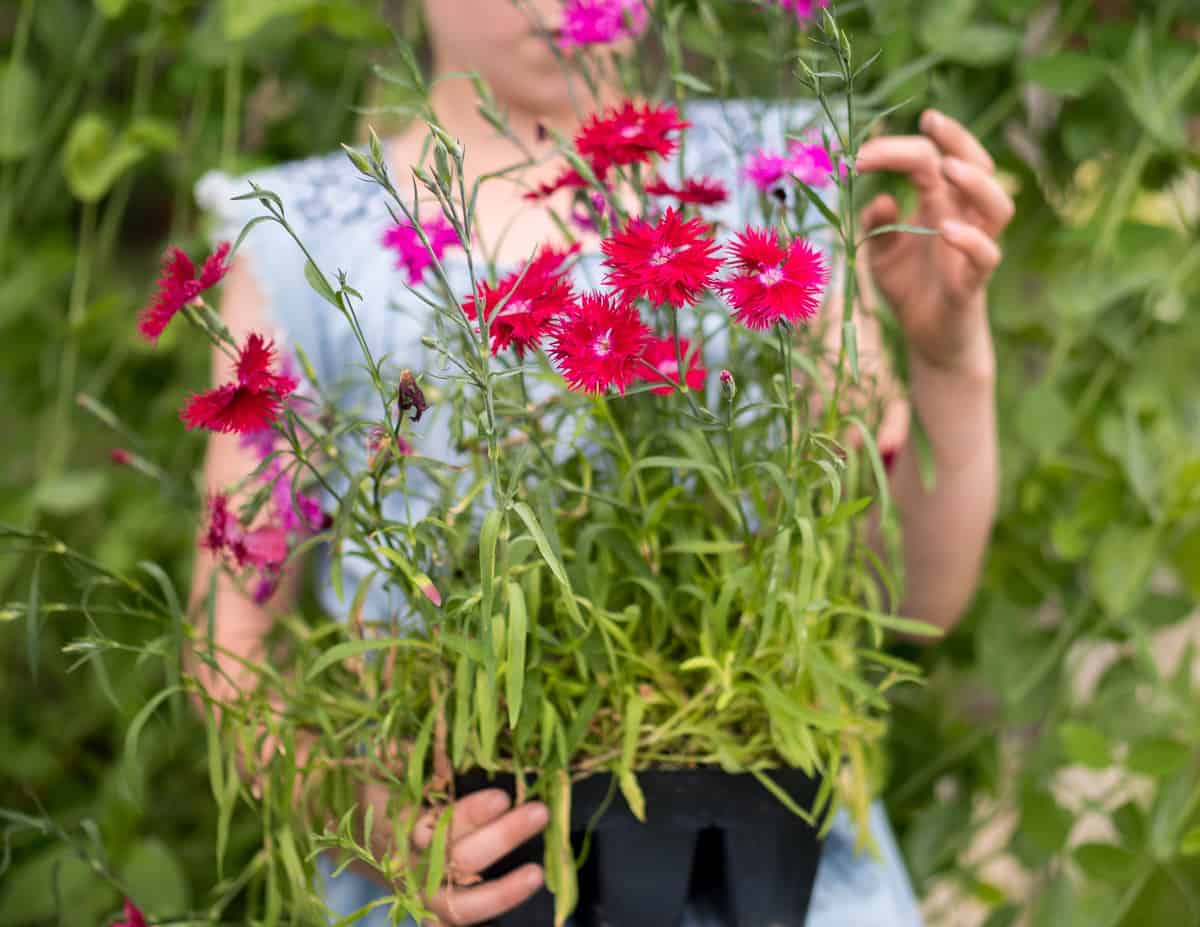
25 flowers that attract butterflies
- Allium
- Aster
- Butterfly Bush
- Chrysanthemum
- Cosmo
- Daisy
- Dianthus
- Echinacea
- Goldenrod
- Joe pye weed
- Lantana
- Liatris
- Lupin
- Marigold
- Milkweed
- Mint
- Monarda
- Black Eyed Susan
- Nasturtium
- Snapdragon
- Sunflower
- Verbena
- Veronica
- Yarrow
- Zinnia
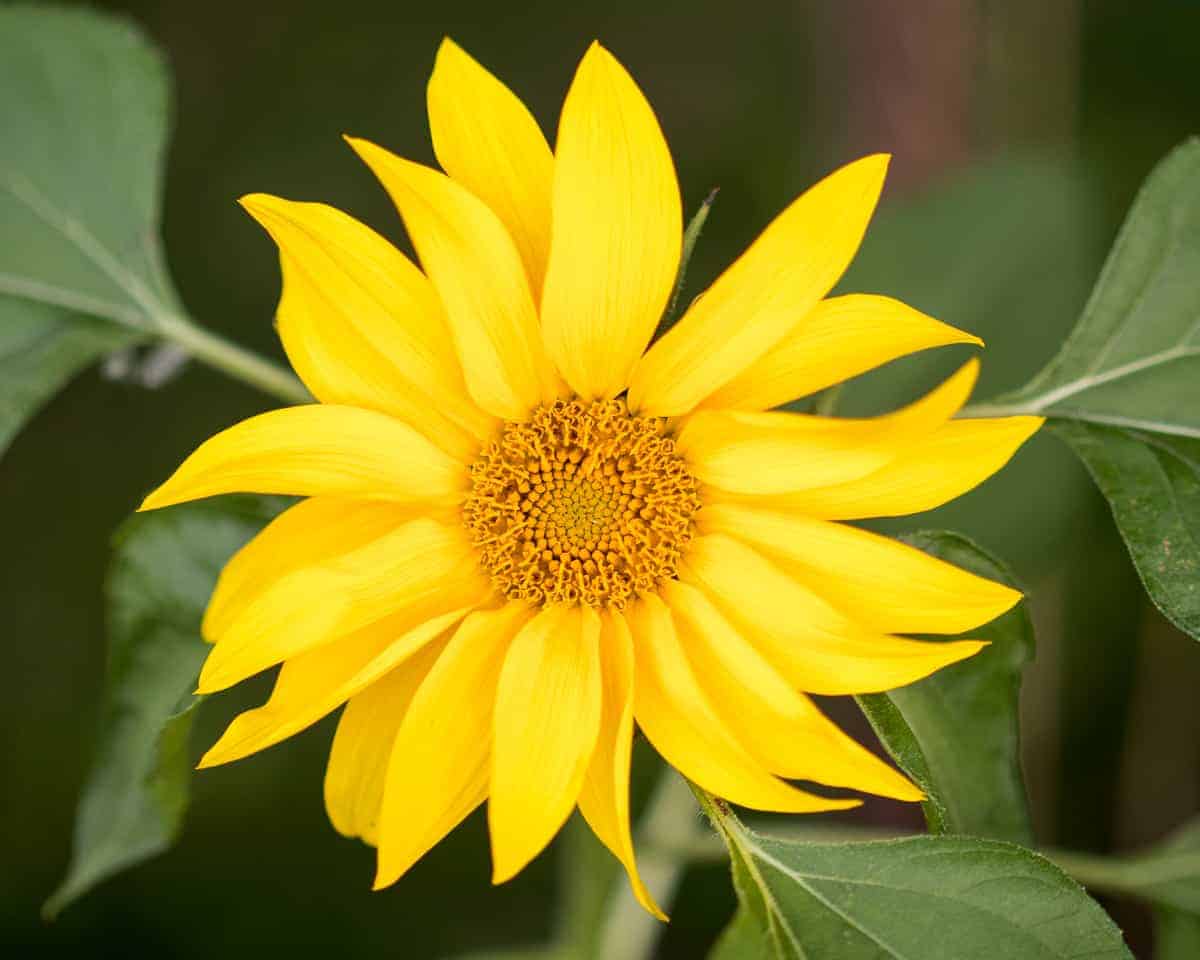
How to plant a butterfly garden
Planting a butterfly garden with your child is a wonderful way to connect with nature and help butterflies thrive. You don’t need a huge backyard or a large space to make a butterfly garden. If you don’t have a lot of room, don’t worry! A butterfly garden can come in all shapes and sizes. You can plant a butterfly garden in a pot on your balcony, in a hanging basket or in several containers along the sunny side of your home.
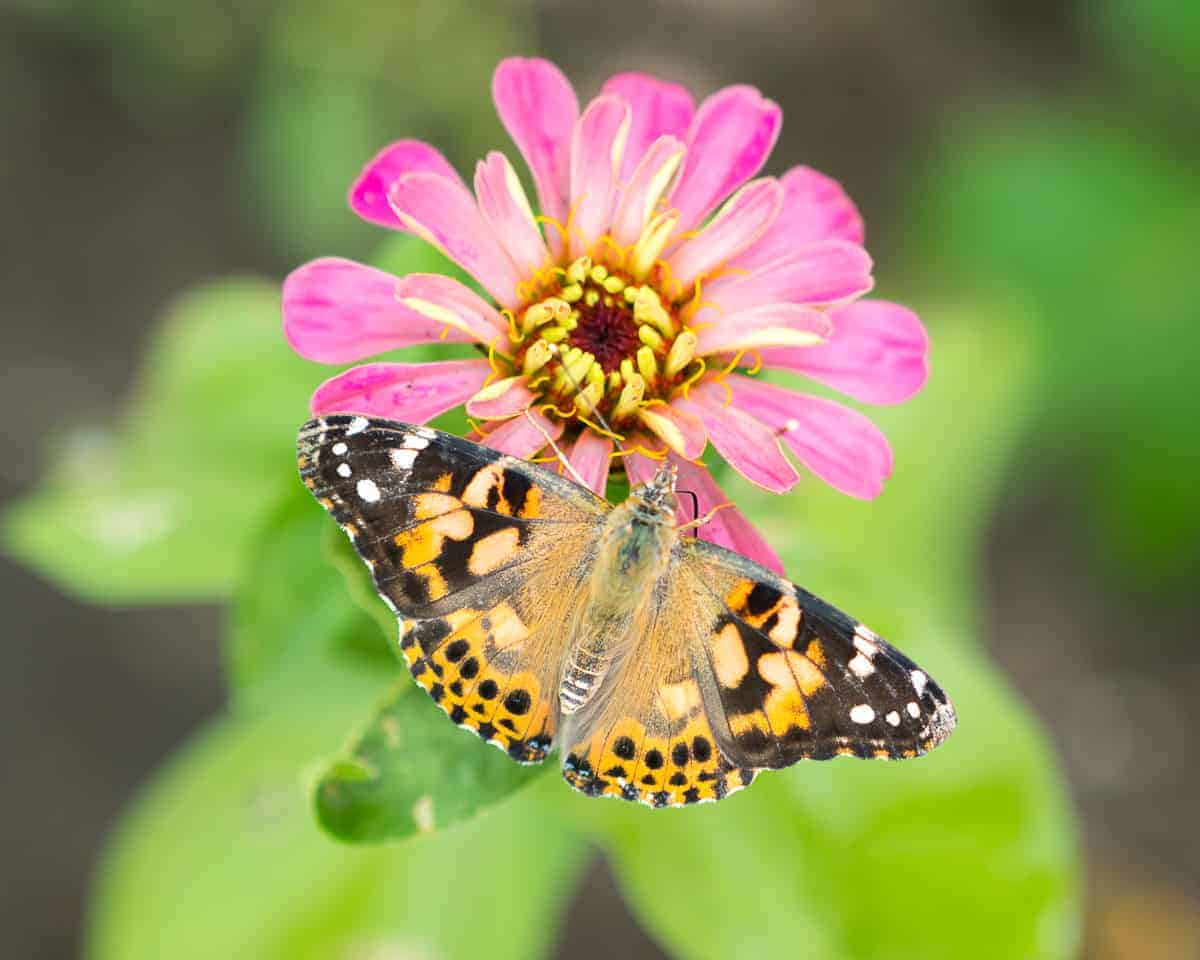
1. Choose a sunny spot
The location of your garden is more important than its size. Butterflies and flowers are sun-powered, so it’s important to plant your butterfly garden in a nice sunny spot. Make sure you also have access to water, whether that’s from rain, a sprinkler or a hose.
2. Gather your supplies
Once you’ve picked your sunny spot, make a list of supplies. You will need the following items:
- soil
- something (or somewhere) to plant your flowers in (container, pot or hanging basket)
- seeds or flowers to plant
- water
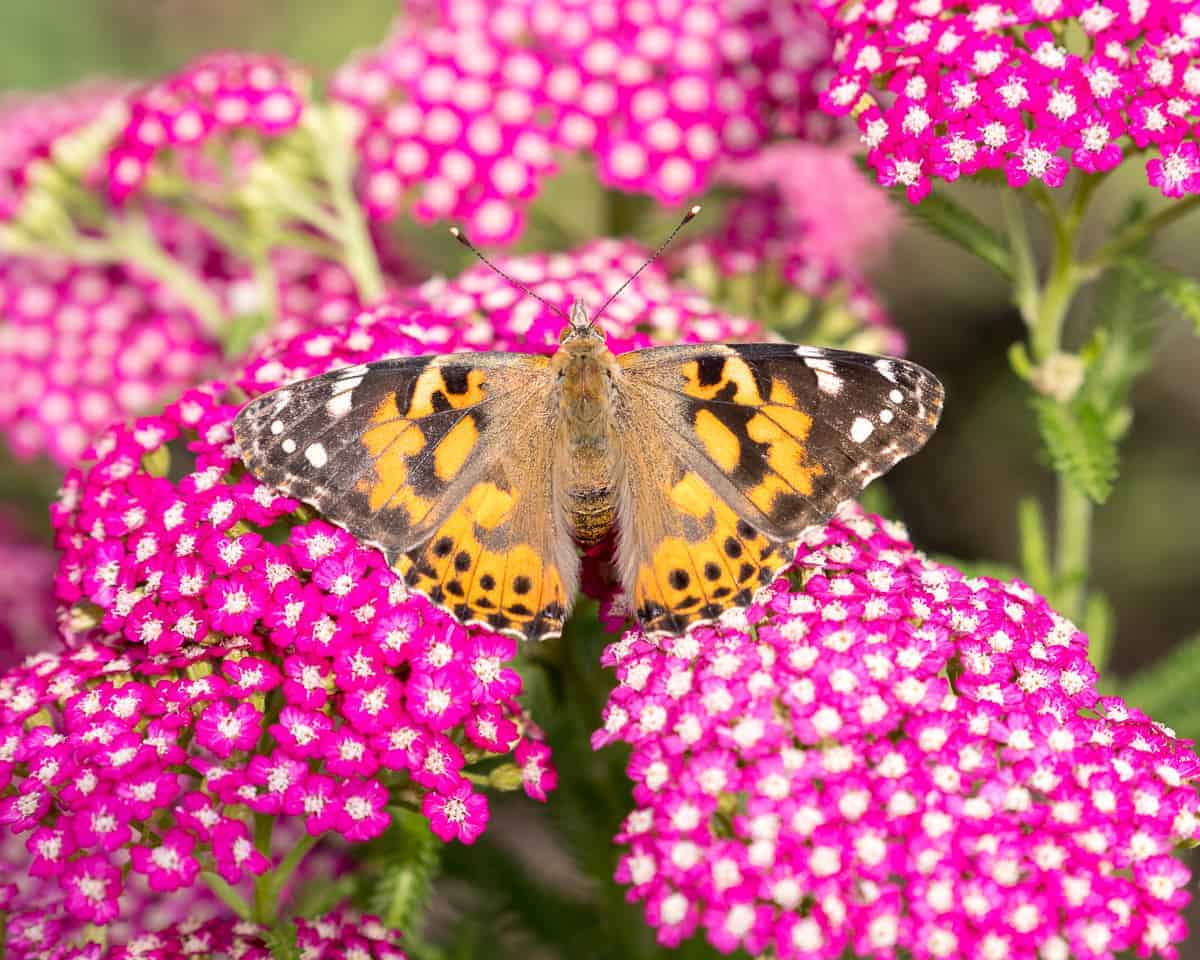
3. Select your flowers
My suggestion is to make a list of flowers that bring you and your child joy (from the list above) and take it to your local garden center, greenhouse or plant nursery. Find someone there that is happy to talk plants and offer you ideas for what kind of plants will work best for your space and climate.
Some things to think about when purchasing flowers are:
- Where are you going to plant your flowers?
- How much space do you have?
- Will the flowers come back every year (perennials) or not (annuals)?
- How much space will your flowers need?
- Will the flowers grow well in your climate?
- How big will your flowers get?
- How much water will the flowers need?
- Is it easier to grow this flower from seed or as a seedling?
4. Plant your flowers
Once you’ve selected your flowers, it’s time to get dirty! If you are planting your flowers from seed, it’s best to get them into the ground early in the season. For flower seedlings, plant them into your pot or into the ground as soon as possible. I find that it’s quite easy to forget about flower seedlings and have them accidentally dry up and die before being planted – oops!
Encourage your child to get their hands dirty and help with planting the flowers. Dirt is good for kids! And don’t forget to give your newly planted seeds and seedlings water so that they can grow.
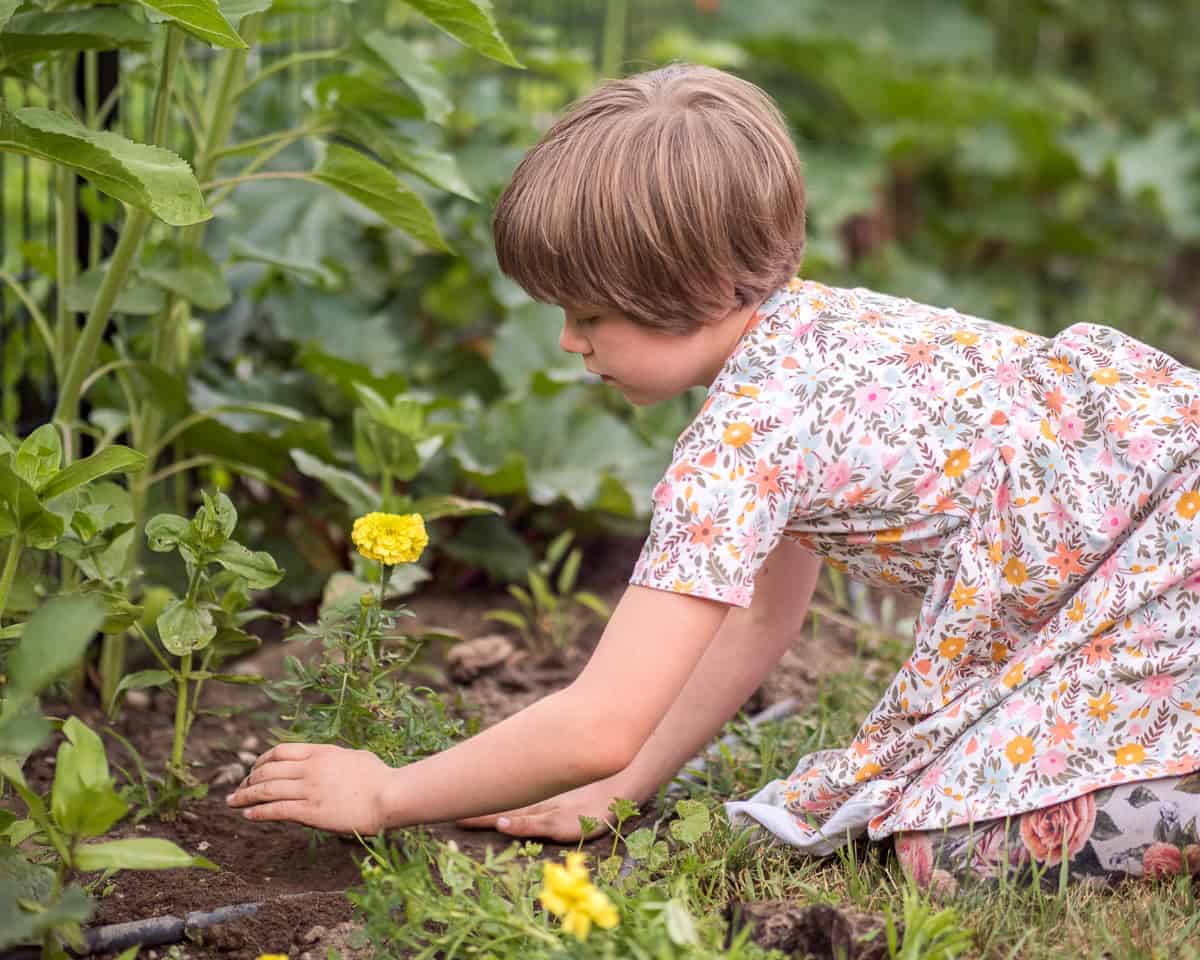
5. Watch for butterflies
Once your flowers are planted, it’s time to sit back and enjoy your need butterfly garden. Set up a chair, blanket or reading nook near your flower garden and keep an eye out for some colorful butterfly friends with your child. Take out books from your local library about butterflies and enjoy some read-aloud time together. Maybe you will even want to rear your own butterflies!
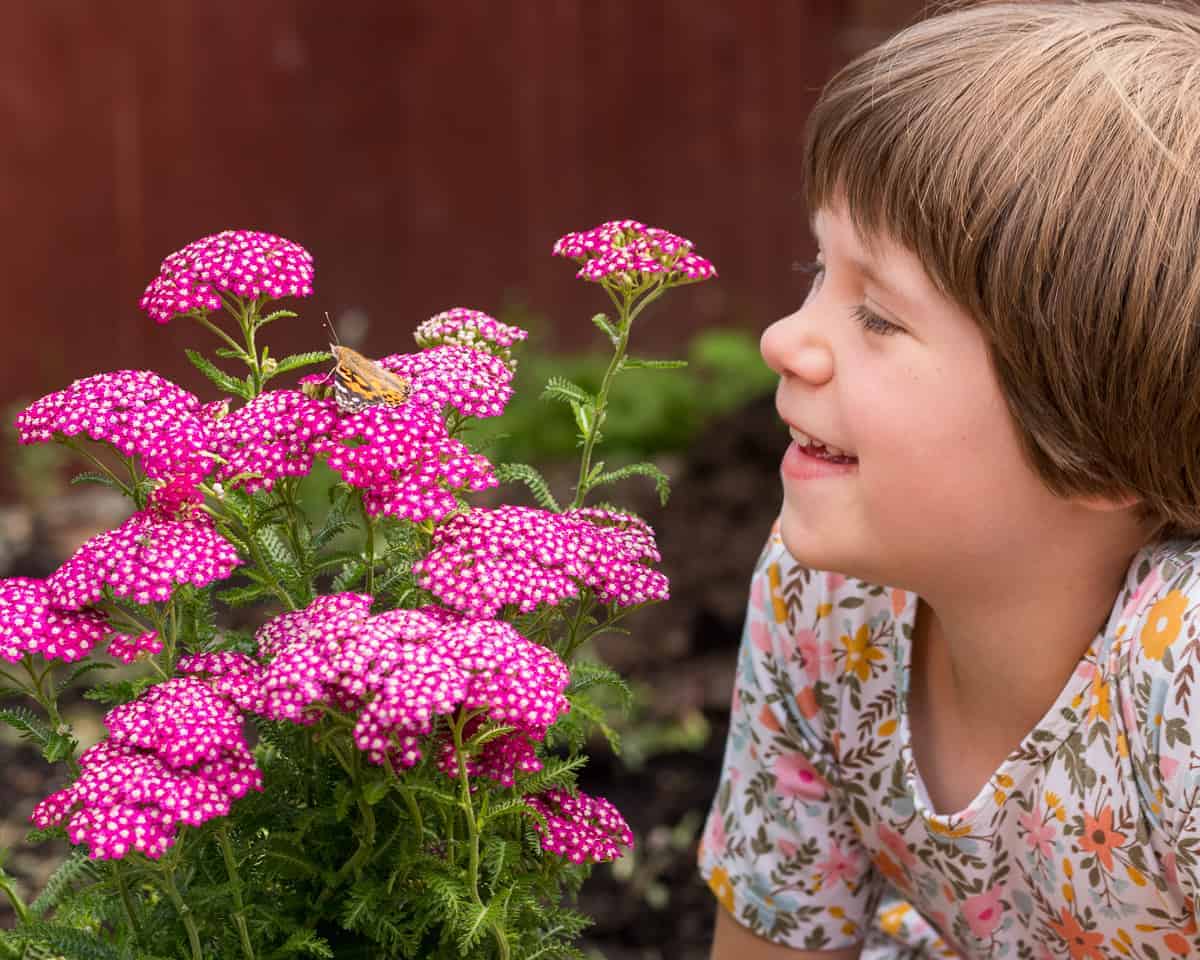
Rearing your own butterflies
Butterflies have an amazing life-cycle called complete metamorphosis. This process has four stages: egg, caterpillar (larva), chrysalis (pupa) and butterfly (adult). It can be very difficult to see all four stages in nature which is why rearing butterflies in your home can be such a great learning opportunity.
These days it’s easy to find butterfly rearing kits from online education stores. One popular butterfly to rear is the Painted Lady (Vanessa cardui) butterfly. My kids reared their first butterflies this season and they just loved it.
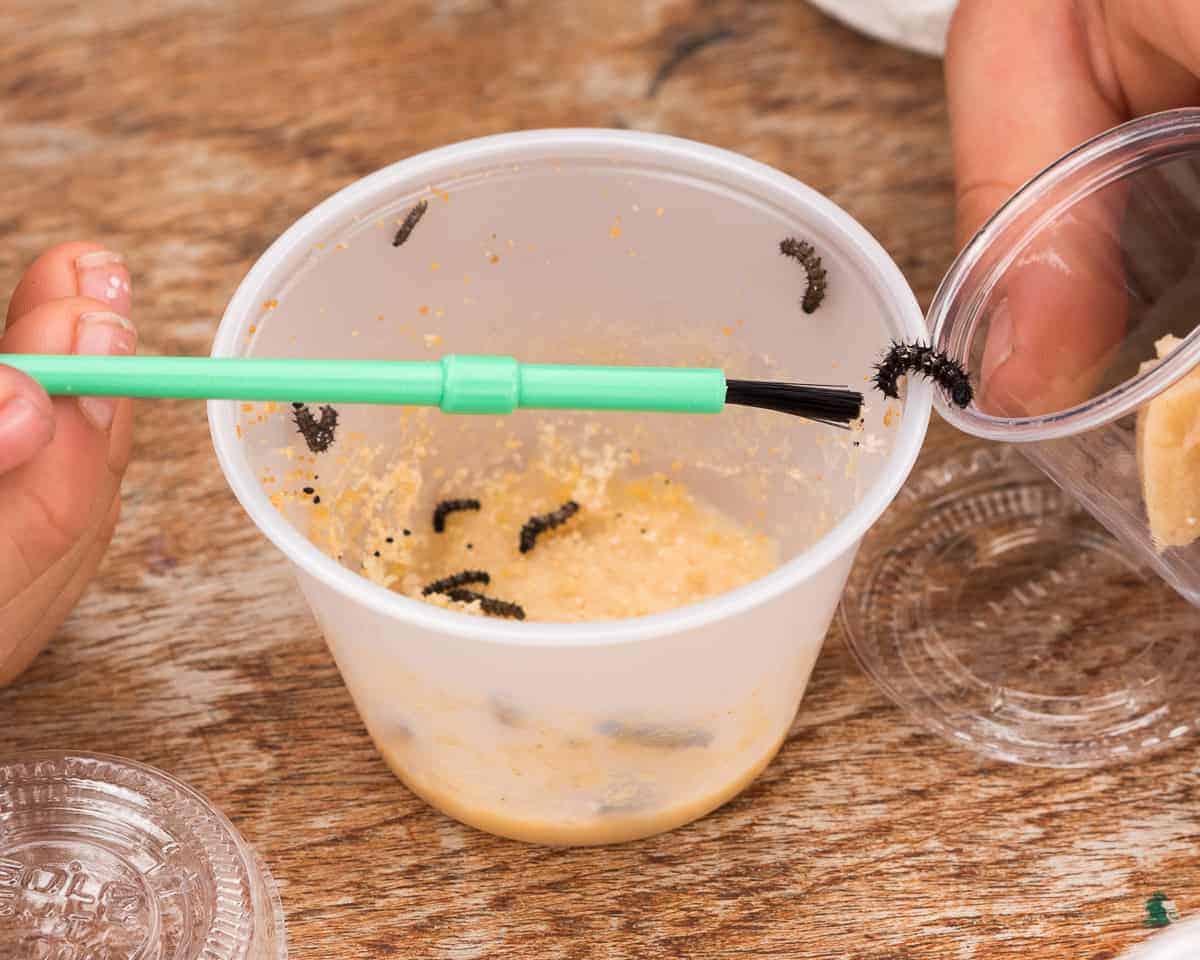
What butterflies live in your area?
What types of flowers do they like to visit?
About the author
Hello! Bonjour! I’m Josée. I am a nature lover, blogger, photographer and homeschooler. I live in the sunny Okanagan Valley of British Columbia, Canada with my husband and my three children. We are avid rock climbers, hikers, campers, skiers and adventure seekers. We love exploring new places, both near and far, and enjoy getting outside whatever the weather. I believe in the beauty of raising wild children!
You can find more about Josée and her adventures at www.backwoodsmama.com and on Instagram at @thebackwoodsmama.

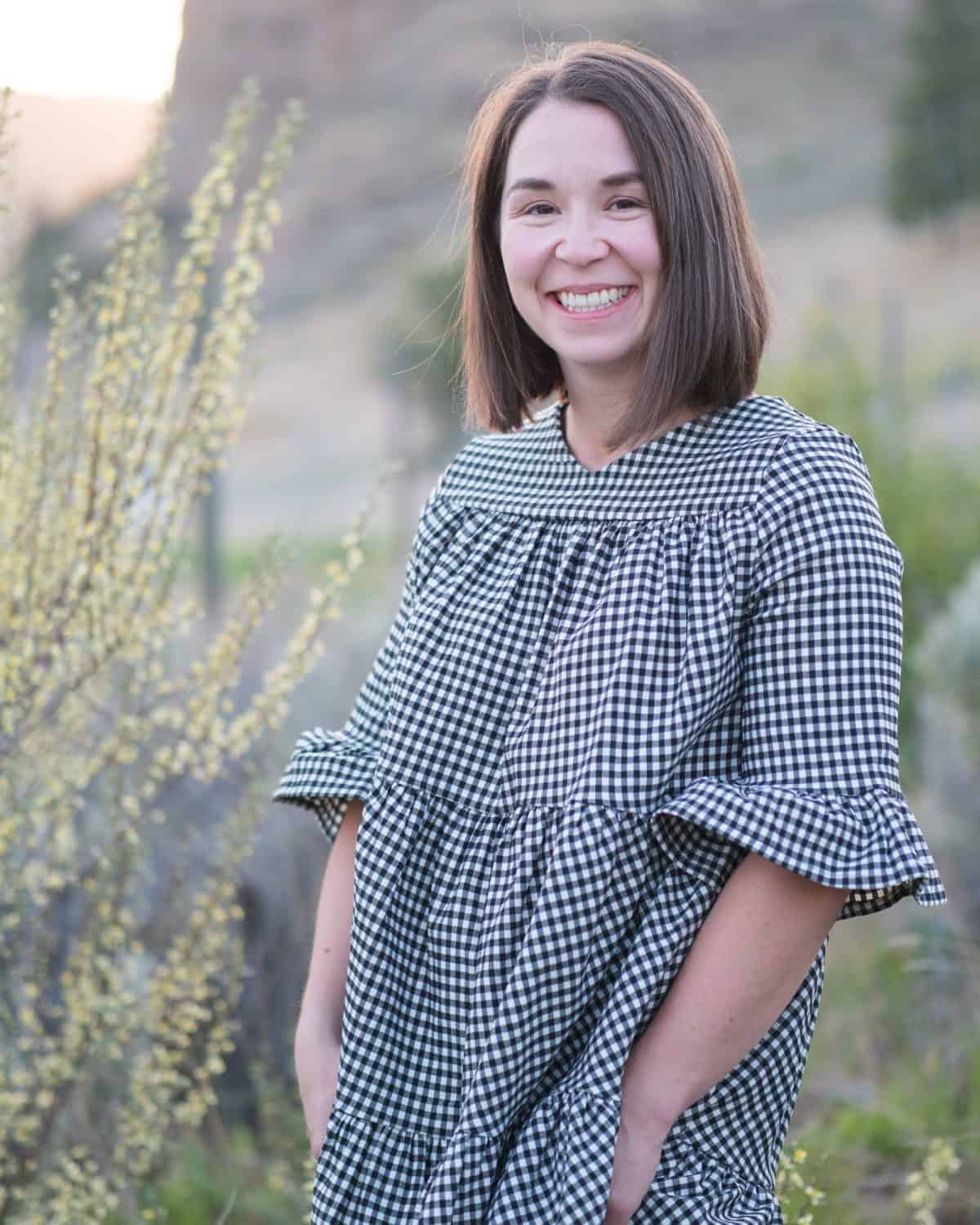







9 comments